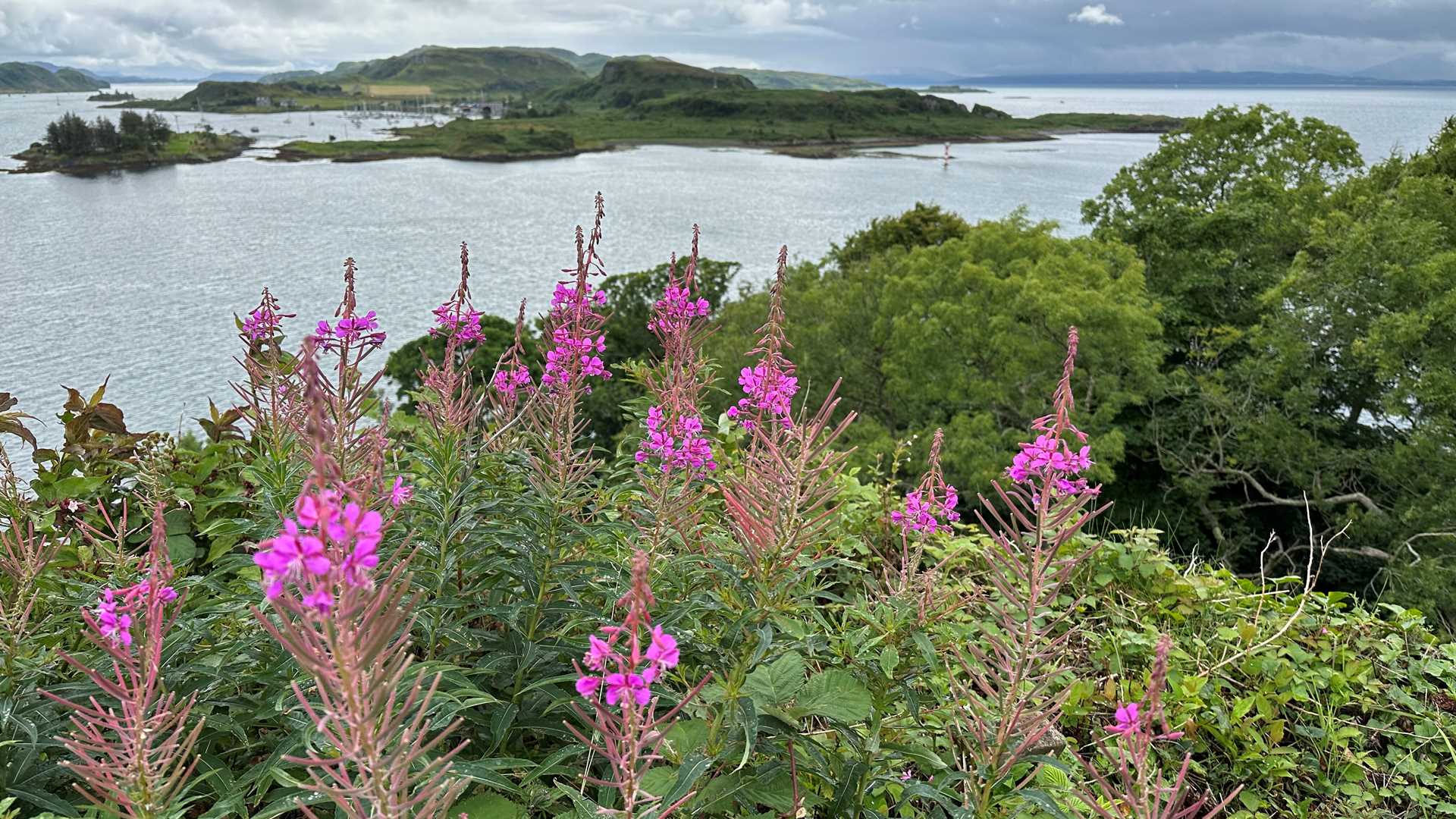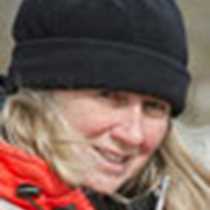One might say the day began in a monochrome way with only a dash of Scotland’s greenery. Charcoal grey clouds sent fingers from high, caressing Ben Nevis’s face while a silver shawl wrapped round its shoulders. As we passed through our final lock, leaving the Caledonian Canal’s freshwater river, the mountain seemed to shrug and cast away its covers to give us a brief view of its peak. We’re now on the sea where the tides rise and fall, leaving a ribbon of golden kelp around its edges. Seals and dolphins romp in the water teasing our observational powers.
What about the weather, you say? It has been typical. One minute a fine mist might add a glow to our complexion, and the next the clouds will break. If it is time to stay on board, the rain will likely fall, but when we prepare to venture forth, it turns pleasant and dry. This morning, we added fog to the mix, turning the shorelines to mysterious silhouettes. But that was all right, for we then had the opportunity to explore the geological story of the area and discover the history of Viking raids and settlements in Scotland.
As the hands on the clock pointed to noon, we slipped into Oban’s harbour as the fog cleared away. Oban is a sizeable place, relatively, with a population around 8,000. Ferries, large and small, came and went all day, bringing visitors from far and wide to prowl the streets and shops.
A strange structure hovers above the town, looking like a miniature coliseum. In 1897, John McCaig saw a means to provide work for local craftsman and at the same time make a lasting monument to himself. Sadly, upon his death, the edifice was never completed, and it remains as it stood one hundred years ago. Sometime during the day, many of us slowly meandered uphill to take in the view from inside and outside the encircling walls.
Strategically placed, the remains of the Clan MacDougall tower house castle hovered off our port side as we entered the harbour and subsequently drew our feet towards it once we were tied to the pier. Black guillemots distracted us from our goal momentarily as they peeked from between the rocks of the seawall and flashed their red feet in flight. Diverting from the waterfront, an attractive, treelined walkway led us to the grounds of Castle Dunollie, a small museum in the 1745 laird’s house, and finally to the ruins of the castle itself.
Oban is known for its whisky so a wee dram before bed seems appropriate especially when accompanied by instructions on how it was created.







